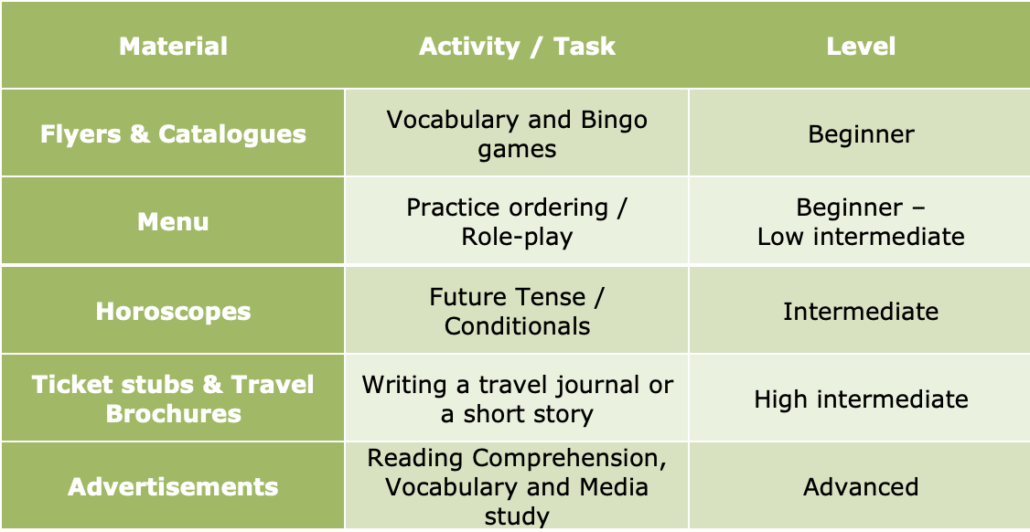HOW TO USE THE COMMUNICATIVE APPROACH
An Introduction to the Communicative Approach
The Communicative Approach is based on the idea that learning a language successfully comes through having to communicate real meaning. In the Communicative Approach, the main objective is to present a topic in context as natural as possible.
In this page, OnTESOL introduces the principles, features, and techniques used in the Communicative Approach. You will also find video tutorials from our TESOL/TEFL certification courses on how to teach grammar, vocabulary, and language skills using the Communicative Approach.
Principles Of The Communicative Approach:
- Language learning is learning to communicate using the target language.
- The language used to communicate must be appropriate to the situation, the roles of the speakers, the setting and the register. The learner needs to differentiate between a formal and an informal style.
- Communicative activities are essential. Activities should be presented in a situation or context and have a communicative purpose. Typical activities of this approach are: games, problem-solving tasks, and role-play. There should be information gap, choice and feedback involved in the activities.
- Learners must have constant interaction with and exposure to the target language.
- Development of the four macroskills — speaking, listening, reading and writing — is integrated from the beginning, since communication integrates the different skills.
- The topics are selected and graded regarding age, needs, level, and students’ interest.
- Motivation is central. Teachers should raise students’ interest from the beginning of the lesson.
- The role of the teacher is that of a guide, a facilitator or an instructor.
- Trial and error is considered part of the learning process.
- Evaluation concerns not only the learners’ accuracy but also their fluency.
Main Features and Techniques of Communicative Language Teaching
- Meaning is paramount.
- Dialogues, if used, enter around communicative functions and are not normally memorized.
- Contextualization is a basic premise. (Meaning cannot be understood out of context. Teachers using this approach will present a grammar topic in a meaningful context. Example: If the new topic to teach is Present Continuous, the teacher will not mime the action of ‘walking’ and ask: What am I doing? I am walking. Instead, the teacher will show, say, pictures of her last trip and tell the students something like: I have pictures of my vacation. Look, in this picture I am with my friends. We are having lunch at a very expensive restaurant. In this other picture, we are swimming at the beach.
- Language learning is learning to communicate and effective communication is sought. (When learners are involved in real communication, their natural strategies for language acquisition will be used, and this will allow them to learn to use the language.)
- Drilling may occur, but peripherally.
- Comprehensible pronunciation is sought.
- Translation may be used where students need or benefit from it.
- Reading and writing can start from the first day.
- Communicative competence is the desired goal (i.e., the ability to use the linguistic system effectively and appropriately).
- Teachers help learners in any way that motivates them to work with the language.
- Students are expected to interact with other people, either in the flesh, through pair and group work, or in their writings.
How Authentic Materials Fit with the Communicative Approach:
The Communicative Approach is about helping students develop communicative competence, which means the ability to use proper grammar and linguistic structure in different real-life contexts and the ability to adapt to different situations. In this light, Authentic Material is key to helping students develop their grammar and vocabulary while exposed to listening, speaking, reading, and writing activities.
Authentic Material allows teachers to supplement or eventually replace the boring ESL textbook. The following is a compilation of authentic material sources most commonly used in the classroom:
- Ad Banners, advertisements, billboards
- Catalogs, college and university brochures, flyers, travel brochures
- Movies, scripts, commercials
- Radio shows, newspapers, Internet websites, magazines, TV shows
- Social media, YouTube, phonebooks
- Ticket stubs, manuals, menus, maps
- Greeting cards, horoscopes
Master the Communicative Approach with OnTESOL. Learn to plan communicative ESL lessons with the 120-hour Advanced TESOL/TEFL Certificate. The 120-hour combines self-paced training with interactive live lesson planning workshops offered via Zoom. 120-hour OnTESOL graduates get 40% OFF when they upgrade to the 250-hour TESOL Diploma to learn to curriculum development skills.
The following video tutorial shows how teachers can use songs to teach English
Authentic material can be used at different levels. The table below will guide you on what materials fit best with your classroom.

Myth: The Communicative Approach Does Not Pay Attention to Grammar Structure
Some critics of the Communicative Approach indicate that it does not place sufficient emphasis on grammar rules, so the method could not properly teach grammatical competence. Placing too much emphasis on games or Authentic Material can lead to a fun and engaging lesson, but the students do not learn anything of value. This is common when people take a sub-par TEFL certification course that lacks comprehensive training in lesson planning, but it is a myth that the Communicative Approach does not place sufficient emphasis on teaching grammar.
The Communicative Approach is supported by ESL lesson planning frameworks that guide teachers to integrate a grammar (or vocabulary) lesson with receptive and productive language skills. By following every step of a lesson planning framework such as Presentation-Practice-Production (PPP), a grammar lesson can be integrated with a speaking lesson in a fun and engaging way. As a result, the Communicative Approach is a creative but structured method for teaching English.
In fact, most ESL textbooks follow the standard PPP lesson planning framework! But the problem with the ESL textbook is that it is boring and often outdated. Those who completed an accredited TEFL / TESOL course know how to plan Communicative Approach lessons that supplement or even replace the ESL textbook with Authentic Material such as movies, newspapers, comics, and songs. Authentic Material supports English language teaching by offering an enjoyable and meaningful context. Opposite to what critics say, Authentic Material is not used in a vacuum to spend some class time having fun. When ESL teachers properly use the Communicative Approach in the classroom, Authentic Material is supported with activities that reinforce practice of grammar structure.
For example, this Communicative Approach lesson plan developed by an OnTESOL graduate during the TESOL course shows how a TV show can be used to teach Phrasal Verbs. This other PPP lesson plan shows how a newspaper article can be used to teach the Present Progressive. The Engage-Study-Activate (ESA) framework is also a great way to teach English with the Communicative Approach. Here is a ESA lesson plan by an OnTESOL graduate.
The video below will help you understand how to teach English grammar function and structure using the Communicative Approach
The Communicative Approach is International
The Communicative Approach is used in different classroom settings worldwide. It is easier to implement in well-managed language programs with a maximum of 15 students. With proper training and a bit of experience, it can get easier to implement in large classes of 40+ students where Direct Method or Audio-lingual (known as Army-style method) are more commonly used.
OnTESOL graduates have written extensively on how the the Communicative Approach helped them adapt to any classroom situation in the world!
Jamie, an OnTESOL graduate in Indonesia, used the Communicative Approach to teach English in a local development program that offered English lessons to scuba diver guides. Jamie did not have access to many resources but focused on meaningful activities to teach them basic math skills, how to tell time, geography, biology, as well as good communication skills and conflict resolution.
In Canada, Clare used the Communicative Approach to supplement the FCE Oxford textbook in a lesson that connected students from different nationalities about their home foods.





